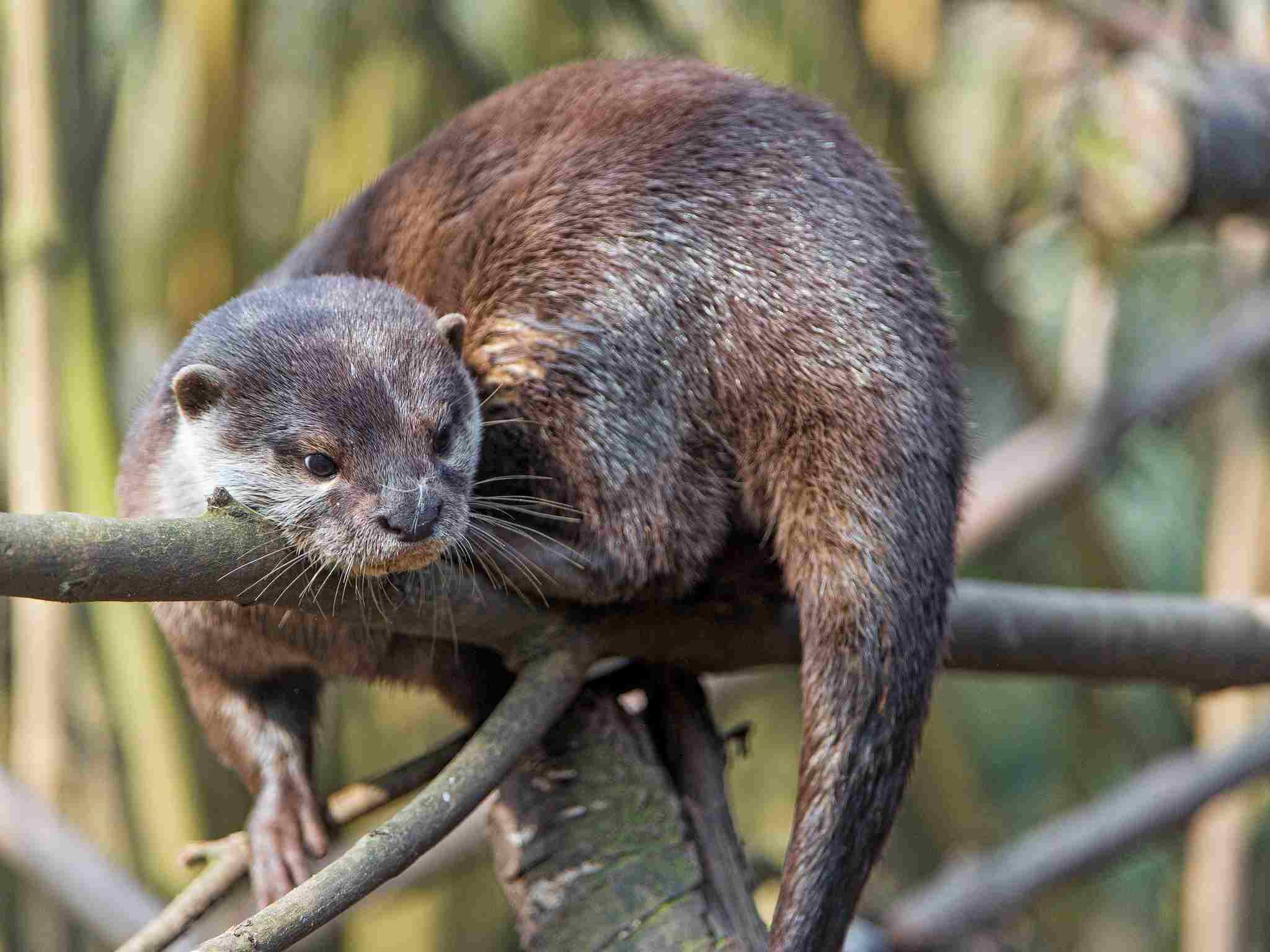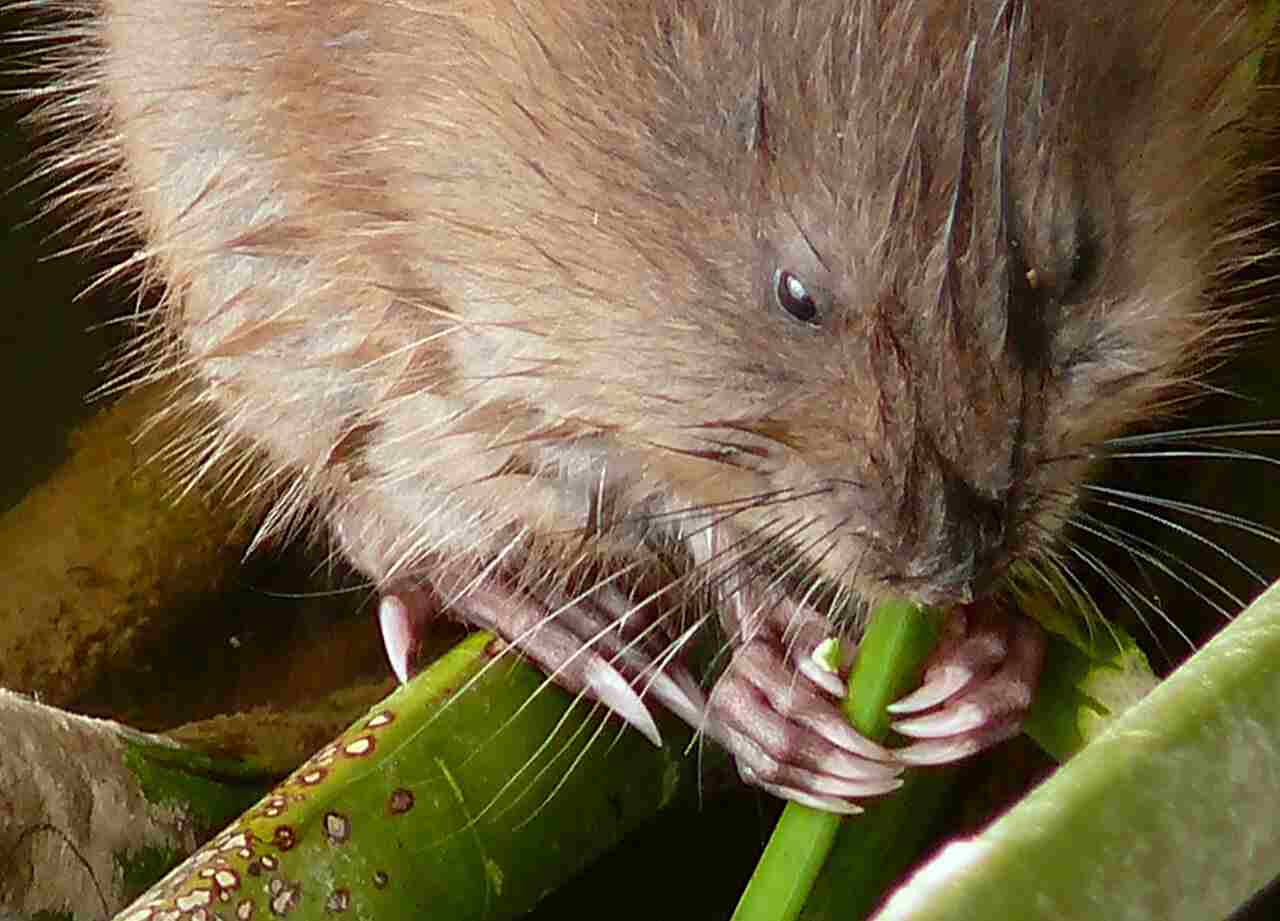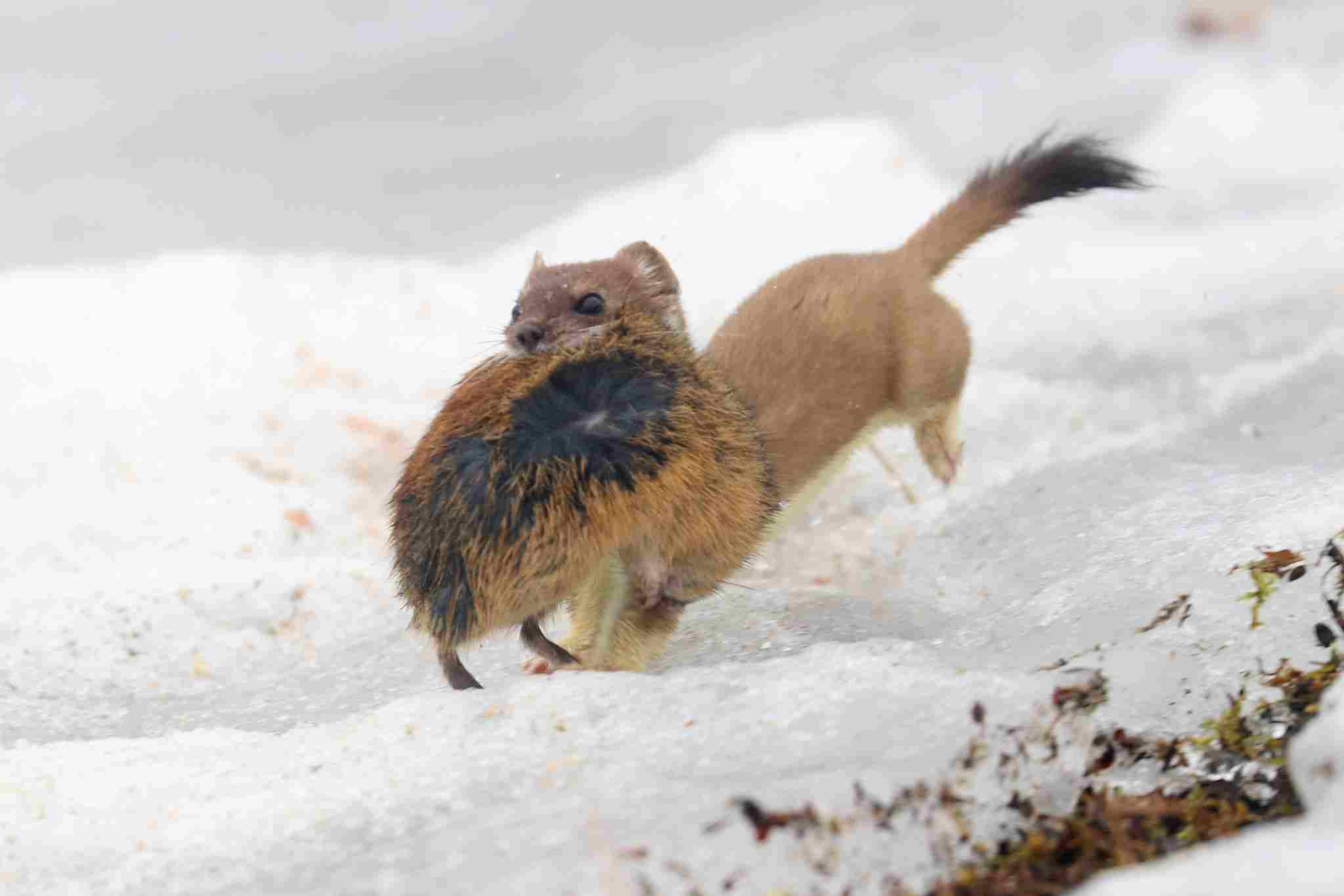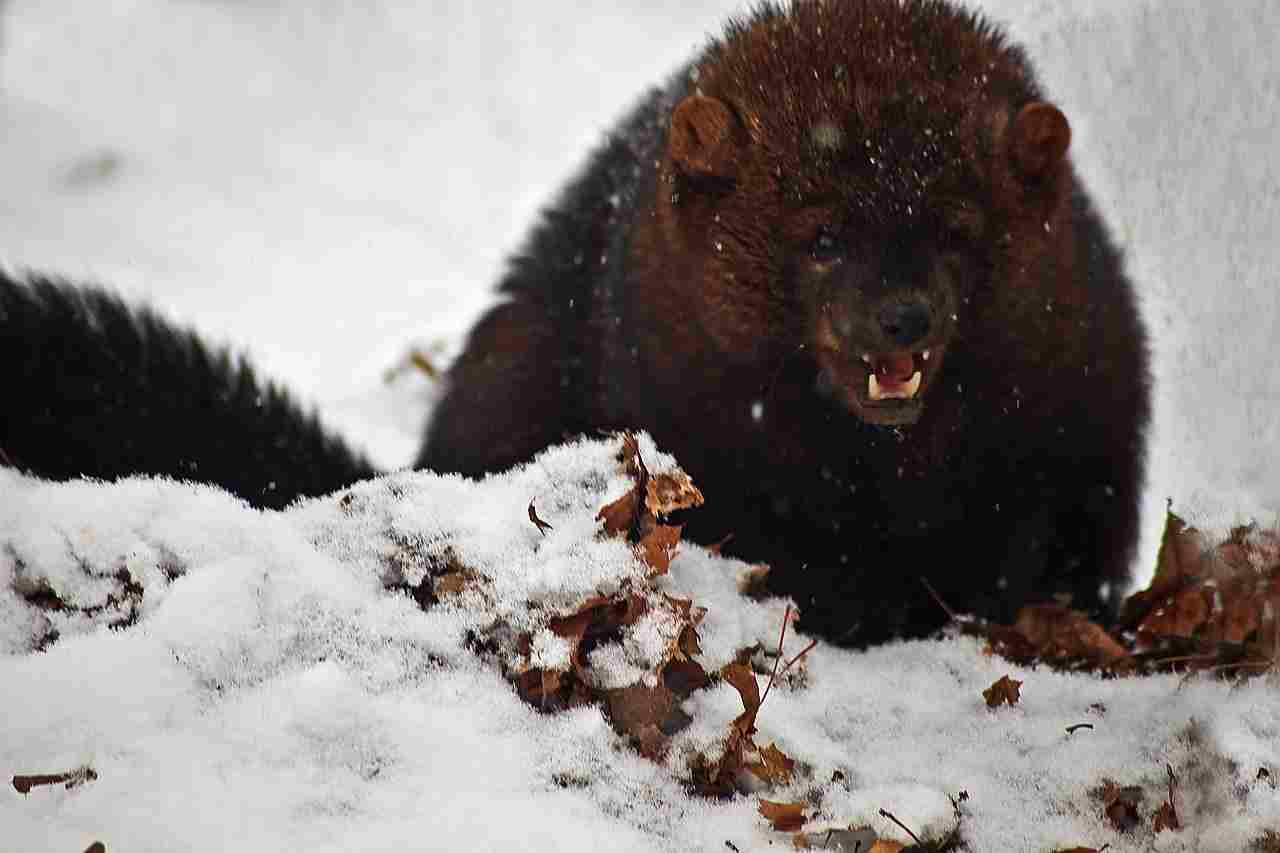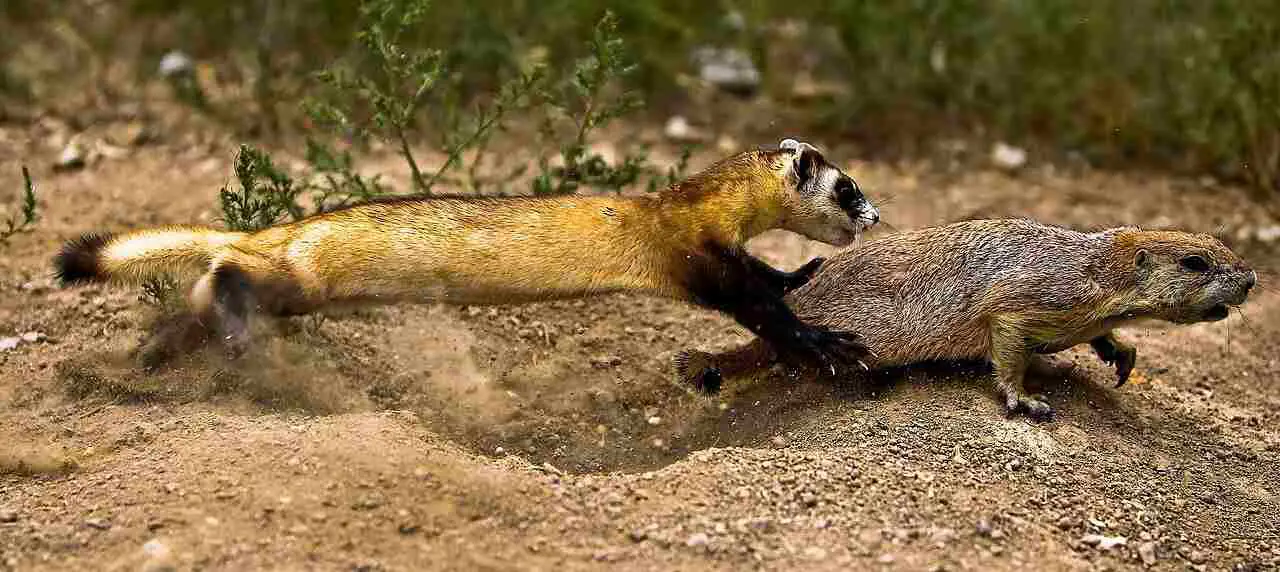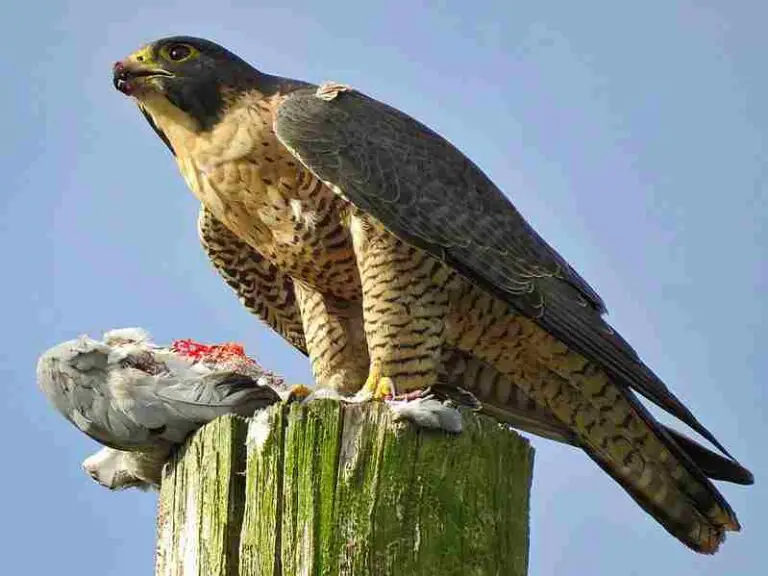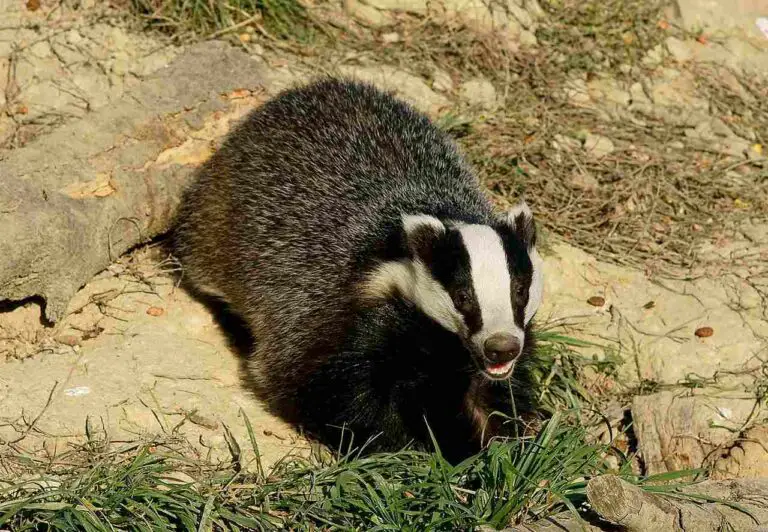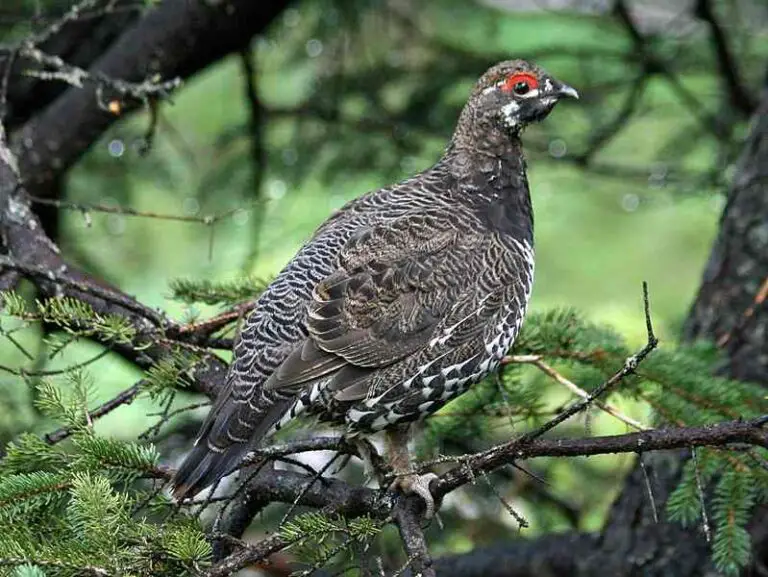Mink Vs Ferret Size, Weight, Overall Comparison
In an envisioned confrontation between a mink and a ferret, both belonging to the Mustelidae family and sharing striking similarities, we delve into the potential dynamics of this encounter. Despite their close resemblance, subtle differences, such as the mink’s solitary behavior, distinct tail morphology, and fur characteristics, may influence the outcome of a fight. This analysis aims to highlight the challenges in predicting the victor in a mink versus ferret scenario, considering their substantial similarities and nuanced distinctions.
Mink vs Ferret Fight: Assessing the Unpredictable Outcome in a Confrontation
In a hypothetical scenario involving a mink and a ferret, these two creatures, being closely related members of the Mustelidae family, share remarkable similarities. However, subtle variations, including the mink’s solitary behavior, differences in tail morphology, and fur characteristics, contribute to the complexity of predicting the outcome of a fight.
I). Striking Similarities:
– Minks and ferrets share remarkable similarities in terms of their general appearance, body structure, and behaviors. Both belong to the Mustelidae family, emphasizing their close kinship.
II). Solitary Behavior of the Mink:
– One notable difference lies in the solitary behavior of minks. Unlike ferrets, which are known for their sociable nature, minks tend to be more solitary. This behavioral distinction may play a role in the dynamics of a confrontation, influencing the strategies employed by each animal.
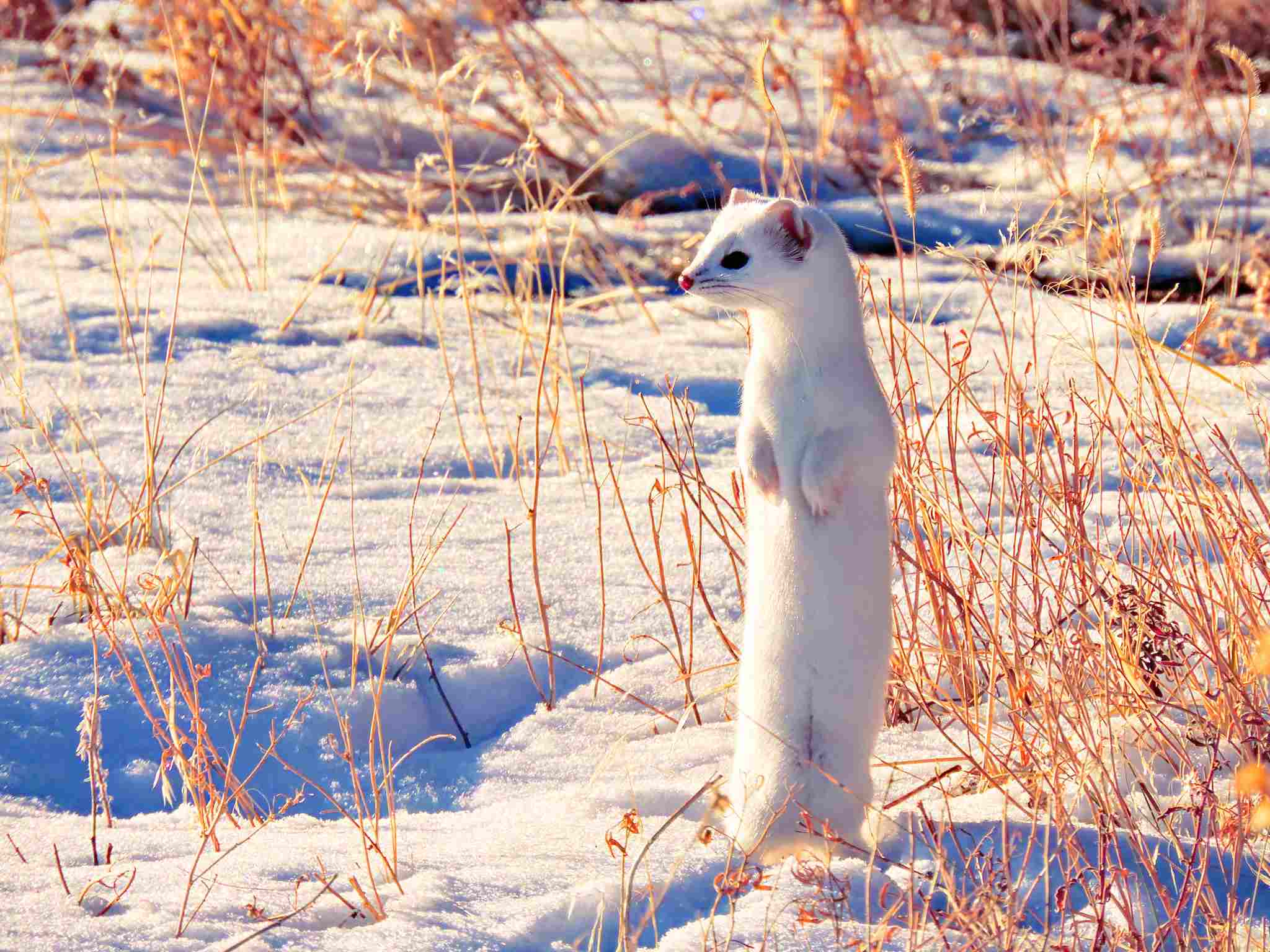
III). Tail Morphology and Fur Characteristics:
– While minks and ferrets exhibit similar tail shapes, minks often have a slightly more robust tail compared to the sleeker tail of ferrets. Fur characteristics may also differ, with minks commonly having denser and coarser fur compared to the softer fur of ferrets.
IV). Challenge in Predicting the Outcome:
– The immense similarity between minks and ferrets makes predicting the outcome of a fight challenging. Their close kinship, coupled with shared behaviors and appearances, adds an element of unpredictability to the potential confrontation.
V). Mink’s Potential Advantage:
– In a hypothetical fight, a mink might have the upper hand due to its often higher level of aggressiveness and potentially stronger bite force. While the similarities between the two creatures make predictions challenging, the mink’s behavioral traits and physical attributes could tilt the odds in its favor.
VI). Overall Dynamics:
– In this complex scenario, the outcome of a fight between a mink and a ferret remains unpredictable due to their immense similarity. However, the mink’s potentially higher aggressiveness and stronger bite force introduce factors that could contribute to its success in a confrontation.
*Details of Comparison
| Criteria | Mink | Ferret |
| Taxonomy | Mustelidae, Mustela vison |
Mustelidae, Mustela putorius furo
|
| Appearance | Sleek, dark brown fur |
Slender, varied coat colors, domesticated
|
| Size | Similar lengths, minks taller at shoulder | Similar lengths |
| Weight | Similar weight range |
Similar weight range
|
| Bite Force (PSI) | Presumed stronger in minks |
Not extensively documented
|
| Physical Offensive Advantages | Strong bite, agility, aquatic hunting |
Agility, terrestrial hunting
|
| Physical Defensive Advantages | Aquatic defenses, agility |
Musky odor, agility
|
| Speed | Versatile in land and water speed |
Agility in terrestrial environments
|
| Agility | Agile in water and land |
Agile in terrestrial settings
|
| Overall Physical Capacity | Well-rounded, semi-aquatic adaptations |
Agility, terrestrial hunting
|
| Habitat Preference(s) | Aquatic habitats |
Adaptable to various environments
|
| Tracks | Webbed prints |
Distinct toe prints
|
| Lifespan | Wild minks 3-4 years; captive may live longer |
Generally longer lifespan, especially in captivity
|
| Mode of Feeding | Broad diet, including aquatic prey |
Carnivorous, preference for small mammals
|
| Intelligence | Intelligent and adaptable |
Intelligent and curious
|
| Social Behavior | Primarily solitary, territorial |
Social, often kept in groups (businesses)
|
| Mode of Reproduction | Polygamous mating system |
Induced ovulators, mating throughout year
|
| Parental Behavior | Female raises offspring alone |
Females (jills) care for kits
|
| Proximity to Human-Inhabited Areas | Near human settlements, fish farms |
Near human settlements, domesticated as pets
|
| Behavior Toward Humans | Elusive, may be aggressive if threatened |
Social, trainable as pets
|
| Danger Posed to Humans | Minimal danger, aggression if threatened |
Minimal danger, may defend if threatened
|
| Associated Precautions | Caution handling; disease transmission precautions |
Proper handling; routine veterinary care
|
| Conservation Status | Varies by species; invasive in some regions |
Not endangered (domesticated); critically endangered (black-footed ferret)
|
| Conclusion | Similarities: Carnivorous, intelligent |
Differences: Habitat, social behavior, conservation status
|
Key Points
- Both are members of the Mustelidae family but different species (taxonomy).
- Minks have a semi-aquatic appearance, while ferrets are more varied and domesticated.
- Similar sizes and weights, with minks being taller at the shoulder.
- Minks presumed to have a stronger bite force.
- Minks have aquatic and offensive advantages, while ferrets excel in agility for terrestrial hunting.
- Differences in defensive advantages, with minks having aquatic defenses and ferrets emitting a musky odor.
- Versatility in speed for minks, agility for ferrets.
- Both exhibit intelligence, adaptability, and carnivorous behaviors.
- Minks are primarily solitary; ferrets are social animals often kept in groups.
- Different reproductive strategies: polygamous for minks, induced ovulators for ferrets.
- Variations in parental behavior, with minks being solitary and ferrets having communal care.
- Both can be found near human settlements; ferrets are often domesticated as pets.
- Wild minks are generally elusive; domesticated ferrets can be social and trainable.
- Minimal danger posed to humans; aggression may arise from feeling threatened.
- Precautions needed when handling both species; disease transmission precautions for minks.
- Conservation statuses vary, with minks having different statuses and ferrets being critically endangered in the wild (black-footed ferret).
1. Taxonomy
Mink (Mustela vison):
Kingdom: Animalia
Phylum: Chordata
Class: Mammalia
Order: Carnivora
Family: Mustelidae
Genus: Mustela
Species: Mustela vison
Ferret (Mustela putorius furo):
Kingdom: Animalia
Phylum: Chordata
Class: Mammalia
Order: Carnivora
Family: Mustelidae
Genus: Mustela
Species: Mustela putorius furo
2. Appearance
Mink:
Sleek, semi-aquatic mammals with a long, slender body.
Dark brown fur with a white patch on the chin and throat.
Sharp, small eyes and a tapered tail.
Ferret:
Slender and elongated body with a more domesticated appearance.
Coat colors can vary widely, including albino, sable, or mixed patterns.
Rounder face and shorter tail compared to minks.
Comparison: Minks have a more streamlined appearance suited for their semi-aquatic lifestyle, while ferrets display greater variation in coat colors, reflecting their domestication.
Ecological Implications: The mink’s streamlined body aids in swimming, allowing it to hunt aquatic prey efficiently. Ferrets, with their diverse coat colors, may have experienced selective breeding for domestic purposes, impacting their ecological role less than that of minks.
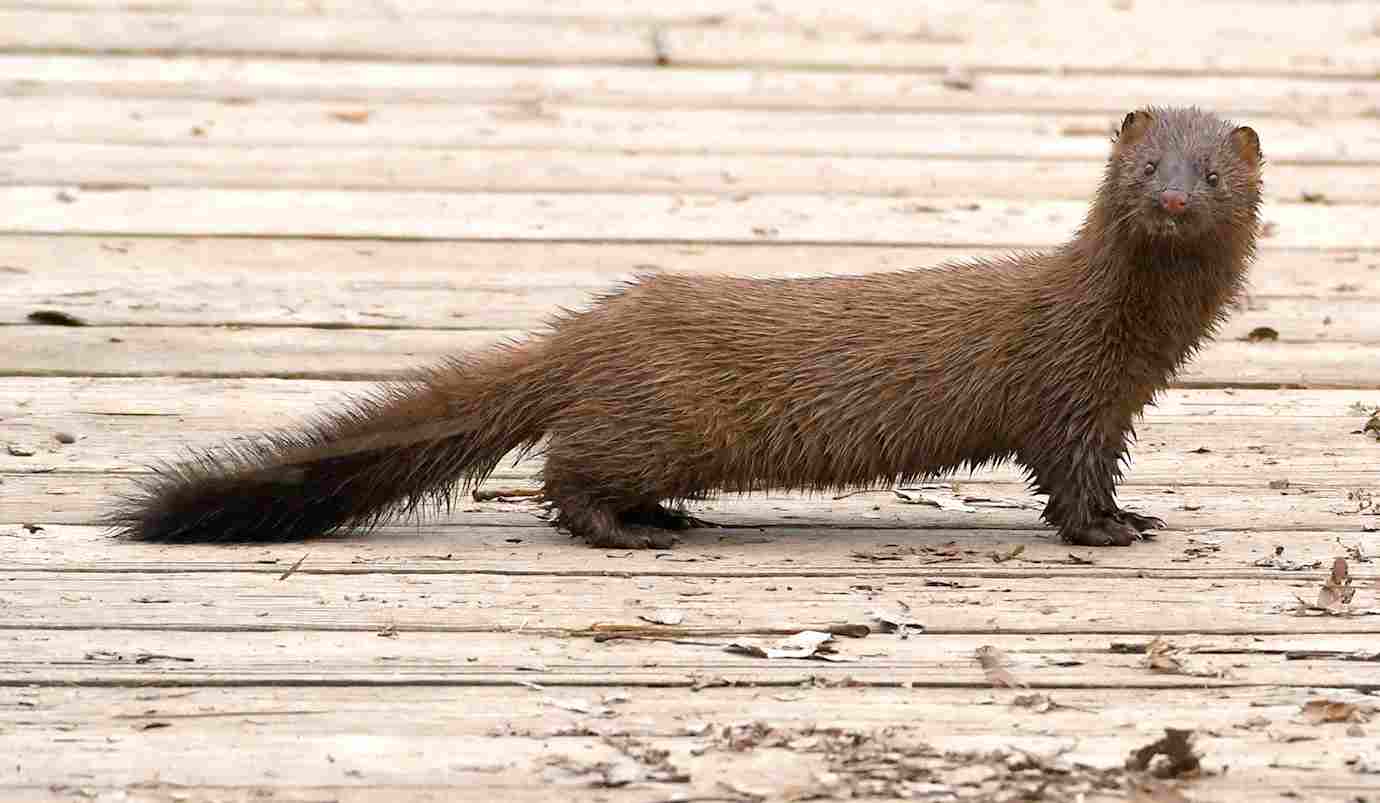
3. Size
Mink:
Length: 40-71 cm (including tail).
Height: 15-20 cm at the shoulder.
Ferret:
Length: 40-60 cm (including tail).
Height: 10-15 cm at the shoulder.
Comparison: Both minks and ferrets exhibit similar lengths, but minks tend to be taller at the shoulder, reflecting adaptations to different habitats and hunting strategies.
Ecological Implications: The size differences may affect their ability to navigate specific environments, with minks potentially having an advantage in navigating water and ferrets adapting to a more terrestrial lifestyle.
4. Weight
Mink:
Weight: 0.7-2 kg.
Ferret:
Weight: 0.7-2 kg.
Comparison: Minks and ferrets share a similar weight range, indicating comparable body mass despite differences in appearance.
Ecological Implications: Their similar weights suggest adaptation to similar ecological niches, with both species likely occupying similar roles in their respective ecosystems.
5. Bite Force (PSI)
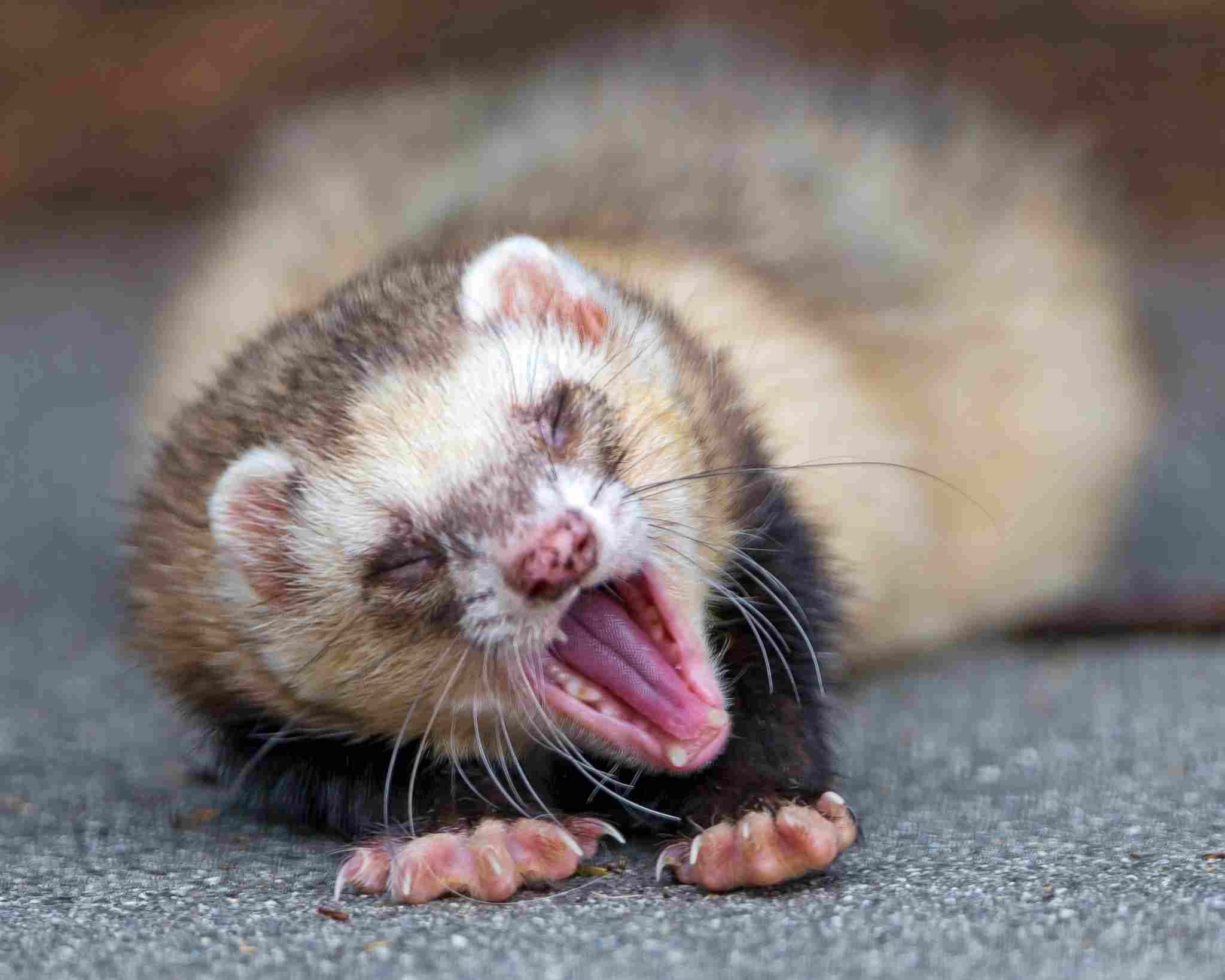
Mink:
Bite Force: Not extensively documented but considered strong for their size.
Ferret:
Bite Force: Not extensively documented, but generally lower than larger carnivores.
Comparison: While specific PSI values are not well-documented, minks are presumed to have a stronger bite force than ferrets, aligning with their predatory nature.
Ecological Implications: The mink’s stronger bite force may be an adaptation for capturing and consuming a diverse range of prey, including aquatic species, while ferrets may have a bite force suited to their smaller prey items.
6. Physical Offensive Advantages
Mink:
Sharp teeth and claws for hunting prey.
Strong bite force aids in capturing and subduing prey.
Ferret:
Sharp teeth for hunting smaller prey.
Agile and quick, allowing for effective pursuit.
Comparison: Minks, with their strong bite force and semi-aquatic adaptations, have offensive advantages suited for capturing a variety of prey, including aquatic species. Ferrets, while possessing sharp teeth and agility, may excel in pursuing smaller, terrestrial prey.
Ecological Implications: Minks’ offensive capabilities may contribute to their success in diverse habitats, especially those with aquatic resources. Ferrets may excel in more land-based ecosystems.
7. Physical Defensive Advantages
Mink:
Slick fur provides insulation in water.
Agile swimmers, aiding in escape from predators.
Ferret:
Ability to emit a musky odor as a defensive mechanism.
Agile and capable of escaping through small spaces.
Comparison: Minks exhibit defensive adaptations primarily related to their aquatic lifestyle, while ferrets rely on agility and a musky odor for evasion.
Ecological Implications: Minks’ aquatic defenses are crucial for survival in water-rich environments, while ferrets’ defensive mechanisms may be more effective in terrestrial habitats.
8. Speed (Km/hour or Mile/hour)
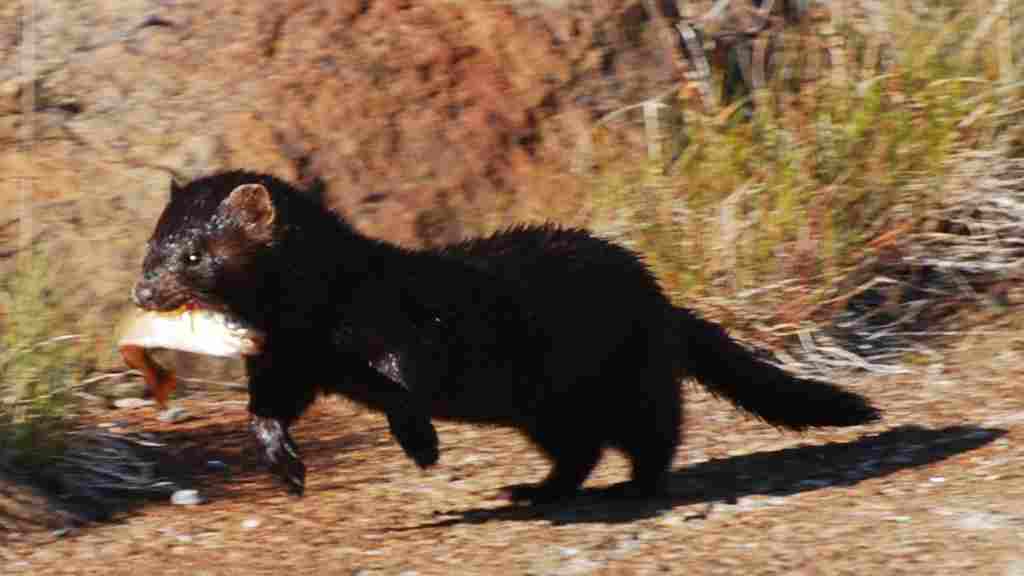
Mink:
Land speed estimated at around 6-10 mph.
Agile swimmers with fast underwater movement.
Ferret:
Quick and agile, capable of short bursts of speed.
Comparison: Minks demonstrate speed both on land and underwater, while ferrets showcase agility in terrestrial environments.
Ecological Implications: Minks’ versatility in speed contributes to their ability to capture prey in diverse habitats, especially in aquatic ecosystems. Ferrets’ agility is likely advantageous for navigating complex terrestrial environments.
9. Agility
Mink:
Agile in both terrestrial and aquatic environments.
Excellent swimmers with streamlined bodies.
Ferret:
Agile and capable of squeezing through tight spaces.
Quick and responsive movements.
Comparison: While both species are agile, minks excel in aquatic environments due to their streamlined bodies, whereas ferrets showcase agility in terrestrial settings and confined spaces.
Ecological Implications: Minks’ agility in water allows them to exploit aquatic resources effectively, while ferrets’ agility is valuable for navigating varied land structures and burrows in pursuit of prey.
10. Overall Physical Capacity
Mink:
Well-adapted for semi-aquatic life with strong swimming abilities.
Versatile predator with sharp teeth, claws, and agility.
Ferret:
Agile and quick, suitable for hunting in diverse terrestrial environments.
Adapted to burrowing and navigating tight spaces.
Comparison: Minks possess a well-rounded set of physical capacities, including aquatic adaptations, while ferrets excel in agility and terrestrial hunting strategies.
Ecological Implications: Minks’ overall physical capacity allows them to exploit a broader range of habitats, especially those with water sources. Ferrets may specialize in terrestrial environments, utilizing their agility and burrowing skills.
11. Habitat Preference(s)
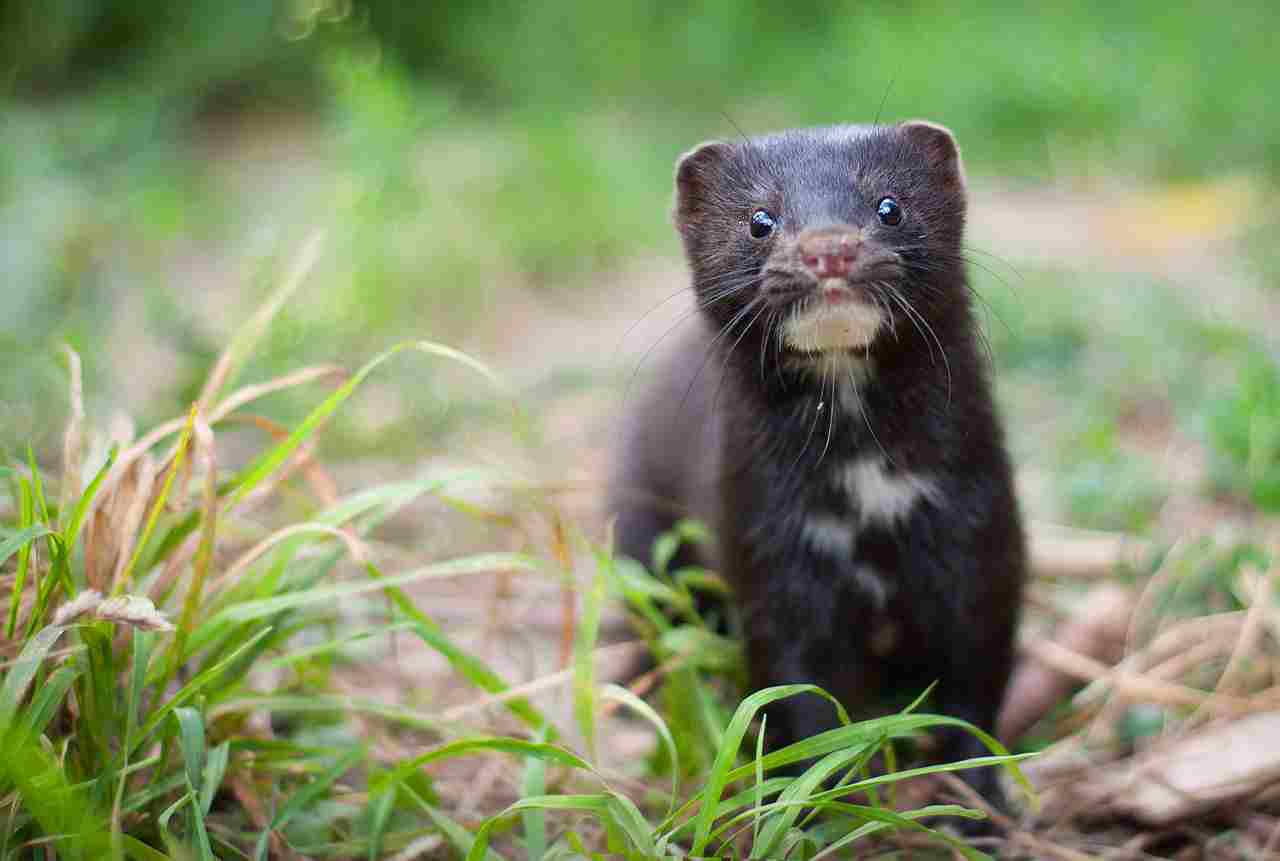
Mink:
Found in a variety of habitats, including wetlands, rivers, and lakes.
Prefers areas with access to water for hunting aquatic prey.
Ferret:
Originally burrow dwellers, but domesticated ferrets adapt well to human environments.
Thrives in areas with suitable prey and hiding spots.
Comparison: Minks show a preference for aquatic habitats, while ferrets, though initially burrow dwellers, have adapted to various environments, including human-inhabited areas.
Ecological Implications: Minks contribute to the balance of aquatic ecosystems, while ferrets may impact local fauna, especially in areas where they have been introduced.
12. Tracks
Mink:
Webbed feet leave distinct prints in mud or soft soil.
Ferret:
Clawed paws with distinct toe prints.
Comparison: Mink tracks often reflect their semi-aquatic lifestyle with webbed prints, while ferret tracks showcase the clawed structure of their paws.
Ecological Implications: Tracking differences can aid in ecological studies, helping to identify the presence and behavior of these species in different habitats.
13. Lifespan
Mink:
Wild minks typically live 3-4 years.
Captive minks may live longer, up to 10 years.
Ferret:
Typically 5-8 years in captivity.
Comparison: Ferrets generally have a longer lifespan than wild minks, but captive minks can live longer than their wild counterparts.
Ecological Implications: The difference in lifespan may influence population dynamics and ecological interactions in their respective habitats.
14. Mode of Feeding
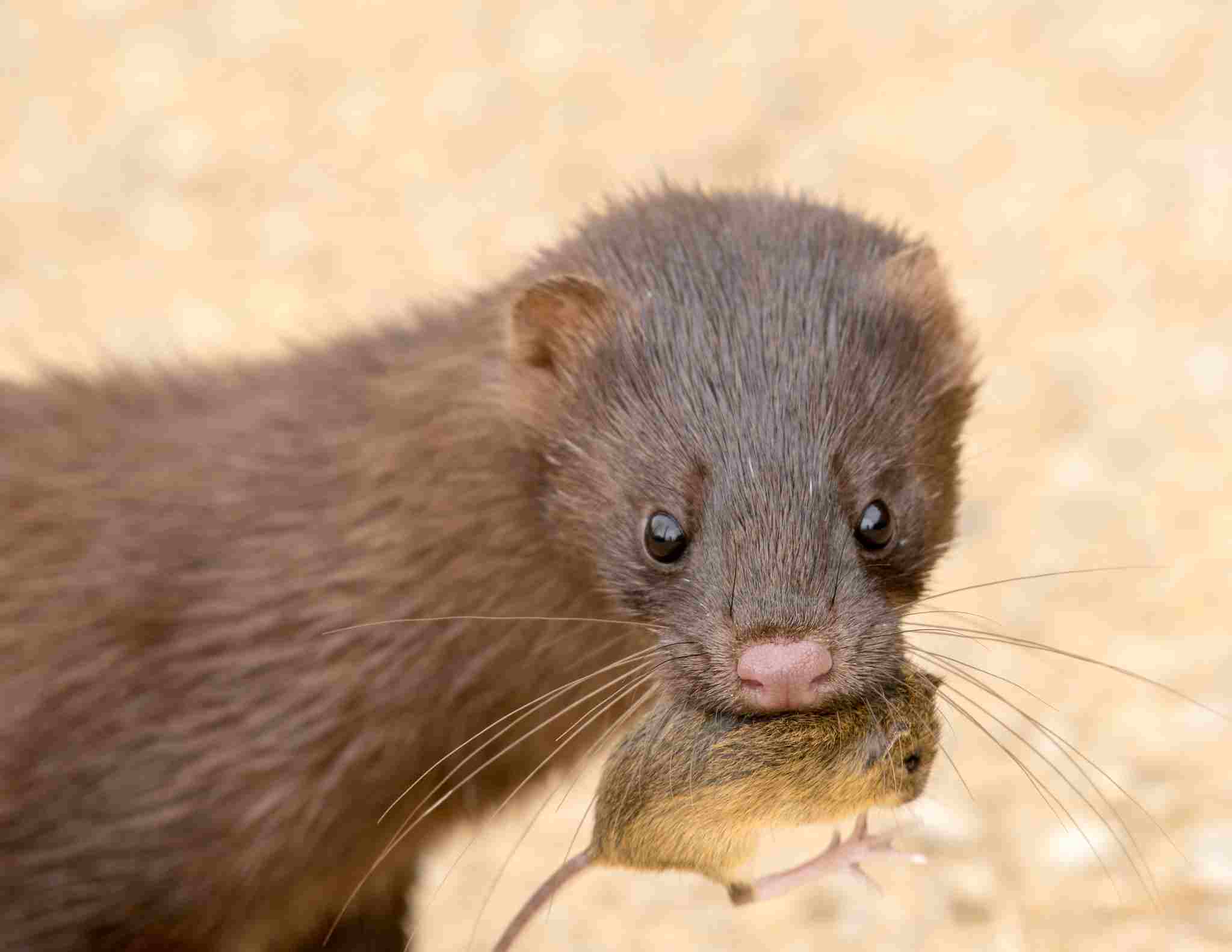
Mink:
Carnivorous diet, preying on fish, amphibians, small mammals, and birds.
Active hunters, using their sharp teeth and agility for capturing prey.
Ferret:
Carnivorous diet, with a preference for small mammals.
Efficient hunters, using their agility to pursue and capture prey.
Comparison: Both minks and ferrets are carnivores, but minks exhibit a broader diet that includes aquatic prey, reflecting their semi-aquatic lifestyle.
Ecological Implications: Minks play a role in controlling populations of aquatic and terrestrial prey, influencing the balance of ecosystems. Ferrets contribute to controlling small mammal populations in their habitats.
15. Intelligence
Mink:
Considered intelligent and adaptable.
Demonstrates problem-solving skills, especially in acquiring food.
Ferret:
Intelligent and curious animals.
Display problem-solving abilities, particularly in navigating environments.
Comparison: Both minks and ferrets exhibit intelligence, using problem-solving skills for hunting and navigation in their respective habitats.
Ecological Implications: Intelligence in both species contributes to their survival by allowing them to adapt to changing environmental conditions and locate food sources.
16. Social Behavior
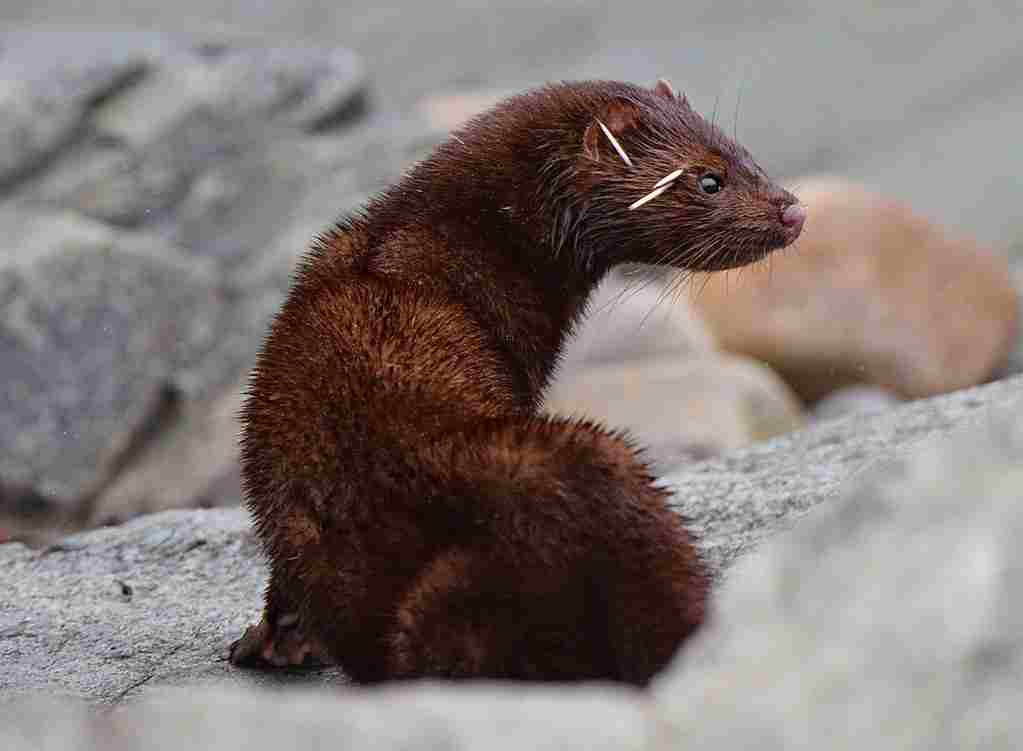
Mink:
Generally solitary, except during the breeding season.
Territories are fiercely defended.
Ferret:
Social animals, often kept in groups known as “businesses.”
Exhibit playful and social behaviors.
Comparison: Minks are primarily solitary except for mating, while ferrets are social animals that often thrive in groups.
Ecological Implications: Social behaviors impact both species’ interactions within their ecosystems, influencing resource competition, breeding patterns, and territorial dynamics.
17. Mode of Reproduction
Mink:
Polygamous mating system.
Mating occurs in late winter to early spring.
Gestation period lasts about 40-75 days.
Ferret:
Induced ovulators, meaning females come into heat in response to environmental cues.
Mating can occur throughout the year.
Gestation period lasts around 41-42 days.
Comparison: Both species have distinct mating systems, with minks exhibiting polygamous behavior, while ferrets are induced ovulators.
Ecological Implications: Differences in reproductive strategies may impact population dynamics and competition for resources within their respective habitats.
18. Parental Behavior
Mink:
Female minks raise their offspring alone.
Kits are born blind and helpless, requiring maternal care.
Ferret:
Females, known as jills, care for their kits.
Kits are born altricial, requiring maternal care and protection.
Comparison: While both species exhibit maternal care, female minks rear their offspring alone, whereas ferrets have communal care for their kits.
Ecological Implications: Parental behaviors influence the survival and development of offspring, contributing to the overall population dynamics in their respective habitats.
19. Proximity to Human-Inhabited Areas

Mink:
Found in diverse habitats, including areas near human settlements.
May cause issues in fish farms due to predation on fish.
Ferret:
Domesticated ferrets are commonly kept as pets, often in close proximity to humans.
Comparison: Both minks and ferrets can be found near human-inhabited areas, with ferrets having a stronger association with human households as pets.
Ecological Implications: Proximity to human settlements can lead to interactions, both positive and negative, impacting the behavior and survival of these species.
20. Behavior Toward Humans
Mink:
Wild minks are generally elusive and may avoid human interaction.
Can become aggressive if cornered or feel threatened.
Ferret:
Domesticated ferrets are social and may enjoy interacting with humans.
Can be trained and kept as pets.
Comparison: Minks tend to be more elusive and cautious around humans, while ferrets, especially domesticated ones, exhibit social behaviors and can form bonds with humans.
Ecological Implications: Wild minks’ avoidance of humans contributes to their survival in natural habitats, while domesticated ferrets showcase adaptability to human companionship.
21. Danger Posed to Humans
Mink:
Generally not aggressive towards humans but can bite if threatened.
Wild minks may carry diseases transmissible to humans.
Ferret:
Domesticated ferrets are not typically dangerous to humans.
Wild ferrets may defend themselves if they feel threatened.
Comparison: Both minks and ferrets pose minimal danger to humans, with instances of aggression typically arising from feeling threatened.
Ecological Implications: Minimal danger to humans allows for coexistence and, in the case of domesticated ferrets, positive interactions between these species and human communities.
22. Associated Precautions
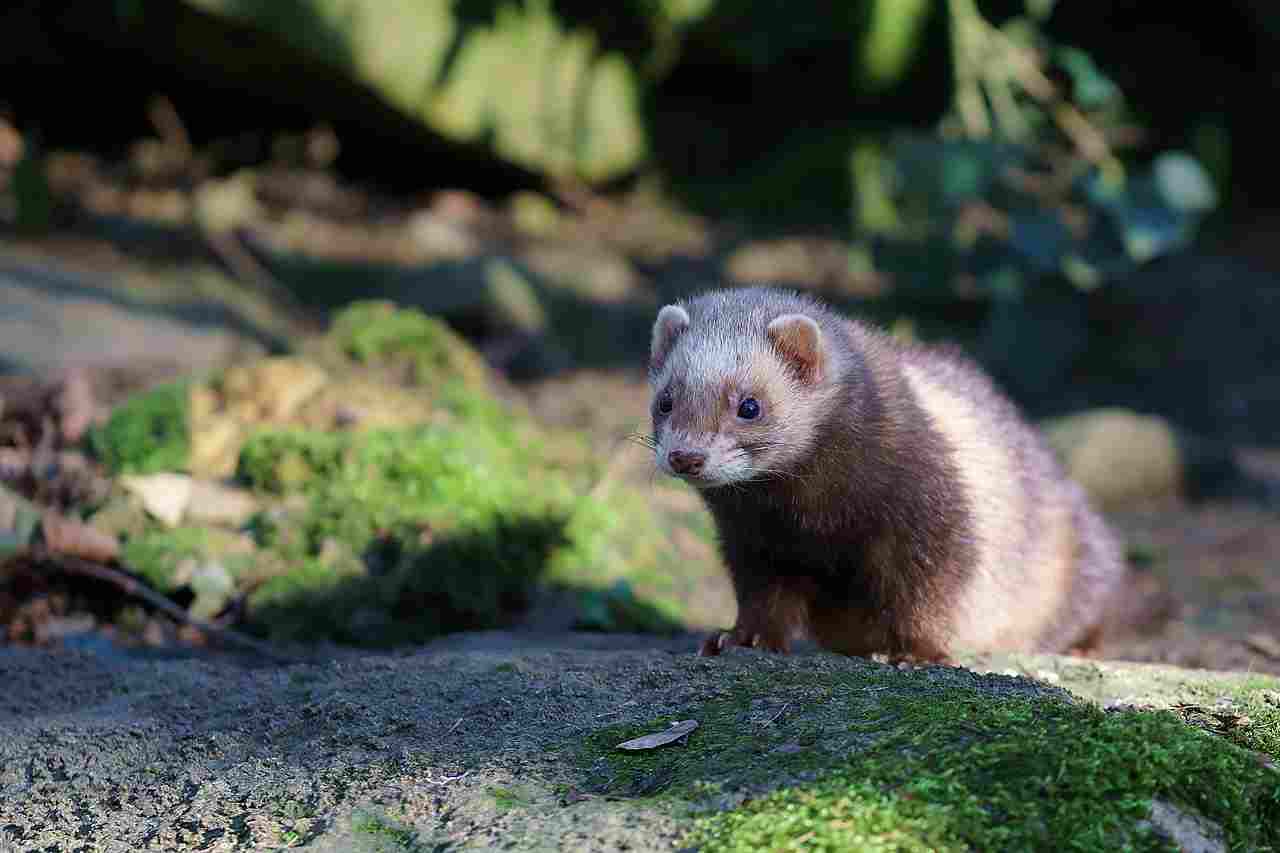
Mink:
Caution required when handling or approaching wild minks to avoid aggression.
Disease transmission precautions, especially in areas with known mink populations.
Ferret:
Domesticated ferrets may require proper handling to prevent bites or scratches.
Routine veterinary care to address potential health issues.
Comparison: Both minks and ferrets necessitate precautions when interacting with them, whether in the wild or as domesticated pets.
Ecological Implications: Awareness and precautions are crucial for minimizing negative interactions and potential impacts on both human and animal health.
23. Conservation Status
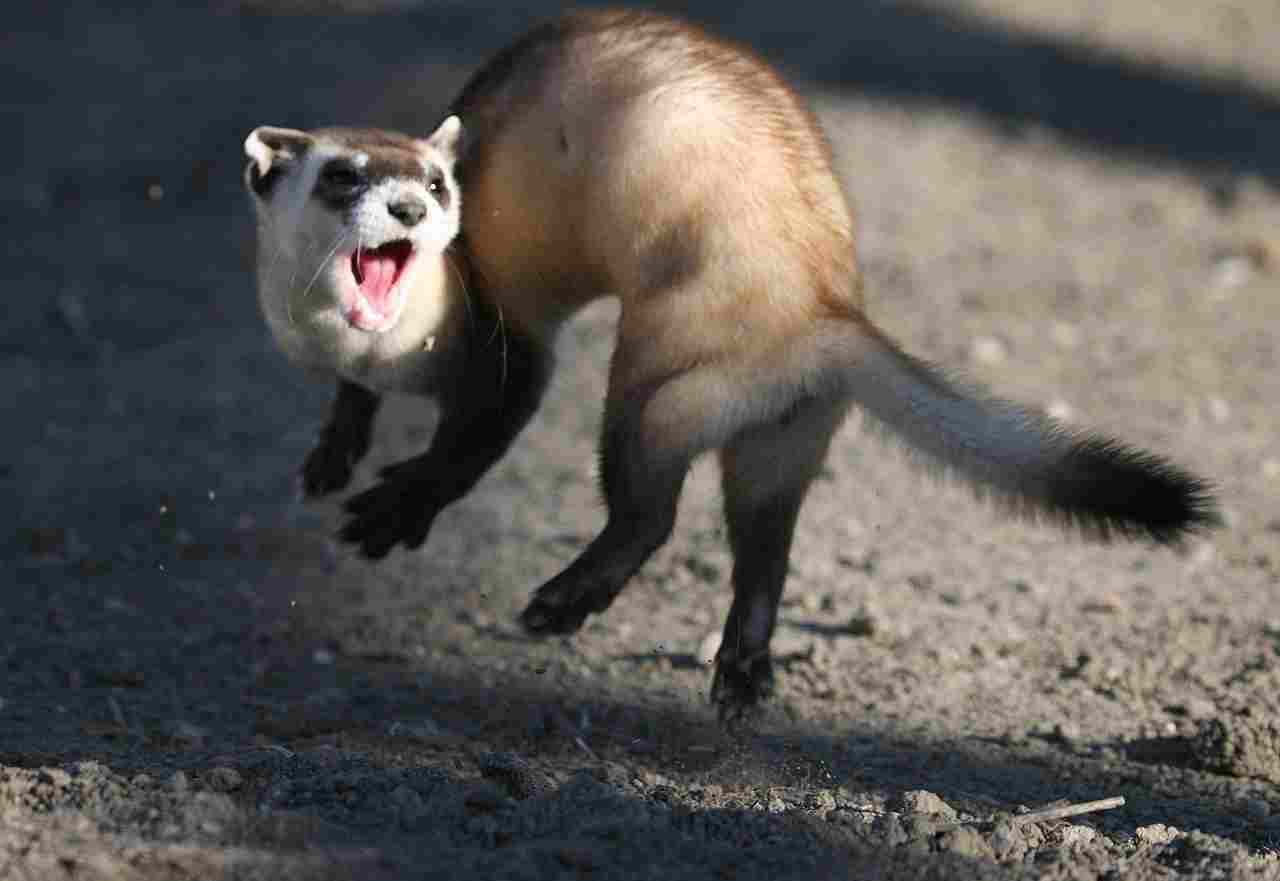
Mink:
Various mink species may have different conservation statuses.
American mink (Neovison vison) is often considered invasive in certain regions.
Ferret:
Domesticated ferrets are not considered endangered.
Black-footed ferrets (Mustela nigripes) are critically endangered in the wild.
Comparison: Conservation statuses vary between different mink species, while domesticated ferrets are not at risk. The black-footed ferret, a wild relative, faces critical endangerment.
Ecological Implications: Understanding the conservation status of these species is essential for implementing appropriate conservation measures and managing potential ecological impacts.
Summary of Comparison
Taxonomy:
Both belong to the Mustelidae family but are different species within the Mustela genus.
Appearance:
Minks have a sleek, semi-aquatic appearance with dark brown fur.
Ferrets are slender, with varied coat colors and a more domesticated look.
Size:
Similar lengths, but minks are generally taller at the shoulder.
Weight:
Both have a similar weight range, indicating comparable body mass.
Bite Force (PSI):
Minks presumed to have a stronger bite force than ferrets.
Physical Offensive Advantages:
Minks have strong bite force and agility for aquatic hunting.
Ferrets rely on agility for terrestrial hunting.
Physical Defensive Advantages:
Minks have aquatic defenses; ferrets use agility and emit a musky odor.
Speed:
Minks are versatile in both land and water speed.
Ferrets exhibit agility in terrestrial environments.
Agility:
Minks are agile in water and on land.
Ferrets showcase agility in terrestrial settings and tight spaces.
Overall Physical Capacity:
Minks have well-rounded abilities for diverse habitats.
Ferrets excel in agility and terrestrial hunting.
Habitat Preference(s):
Minks prefer aquatic habitats; ferrets adapt to various environments.
Tracks:
Minks leave webbed prints; ferrets have distinct toe prints.
Lifespan:
Ferrets generally have a longer lifespan, especially in captivity.
Mode of Feeding:
Minks have a broader diet, including aquatic prey.
Intelligence:
Both exhibit problem-solving skills and adaptability.
Social Behavior:
Minks are primarily solitary; ferrets are social animals.
Mode of Reproduction:
Minks have a polygamous mating system; ferrets are induced ovulators.
Parental Behavior:
Mink females raise offspring alone; ferrets have communal care.
Proximity to Human-Inhabited Areas:
Both can be found near human settlements; ferrets often as pets.
Behavior Toward Humans:
Minks are elusive; ferrets, especially domesticated, are social.
Danger Posed to Humans:
Both pose minimal danger, with aggression arising from feeling threatened.
Associated Precautions:
Caution needed for handling both species; disease transmission precautions for minks.
Conservation Status:
Various conservation statuses for different mink species; domesticated ferrets not endangered.
Conclusion
I. Similarities:
Both are carnivorous mammals belonging to the Mustelidae family.
Exhibit intelligence and adaptability in their behavior.
II. Differences:
Minks are semi-aquatic, with a preference for aquatic habitats, while ferrets are more adaptable to diverse terrestrial environments.
Minks have a more solitary lifestyle, while ferrets are social animals, often kept in groups.
Conservation statuses vary, with certain mink species being invasive, and black-footed ferrets facing critical endangerment in the wild.
